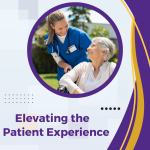During the month of June, we are taking time to share information about caring for your eyes and specifically about the topic of Cataracts. According to the American Academy of Ophthalmology, Cataracts are the leading cause of vision loss worldwide and affect nearly 22 million Americans age 40 and older. Because there are so many people affected by them, it’s to be expected that there is a lot of misinformation floating around. Here are some important facts and myths:
Five Common Cataract Myths to Dispel
MYTH 1: Eye drops can prevent or dissolve cataracts.
FACT: No. The Food and Drug Administration has not approved any drops that cure or delay cataracts. But cataracts are not a “substance,” so there is nothing for the drops to dissolve.
MYTH 2: Close-up tasks like reading or sewing make cataracts worse.
FACT: No. Cataracts are not caused by how people use their eyes. However, cataracts likely become more noticeable during close work.
MYTH 3: Cataracts are reversible.
FACT: No. The lens naturally clouds as it ages. This process is unavoidable. However, its progress can be slowed by quitting smoking, eating a balanced diet and wearing sunglasses with 100% UVA and UVB protection. ·
MYTH 4: Cataract surgery is dangerous, and recovery takes months.
FACT: No. Cataract surgery is one of the safest and most highly perfected surgical procedures in medicine, with a 95 percent success rate. Cataract patients often notice vision improvement immediately following surgery, and others will notice more gradual improvement for a few months afterward.
MYTH 5: Cataracts “grow back.”
FACT: No. Cataracts develop as the lens’s cells die and accumulate; they are not a “growth” that sits on top of the eye. Occasionally patients do develop a different, secondary cataract, though. But this can easily be treated with laser surgery, a painless, 15-minute procedure usually done at a doctor’s office.
Now that we have dispelled some myths, let’s talk about symptoms of Cataracts. Common Symptoms include:
- Cloudy, fuzzy, foggy, or filmy vision.
- Glare from lamps or the sun, which may be severe.
- Difficulty driving at night due to glare from headlights.
- Frequent changes in eyeglass prescription.
- Double vision.
- Improvement of near vision (second sight) that then gets worse.
- Difficulty doing daily activities because of vision problems.
If you are an older adult, discuss with your doctor how often you need to have routine eye exams. If a doctor has not determined that you have cataracts but you have symptoms that concern you, consult with your doctor to find the best course of action for you. Bond Clinic Ophthalmology is lead by Michael Ort, MD. Dr. Ort has been with Bond Clinic since 1983 and is accepting new patients.
 Treating you well since 1948
Treating you well since 1948 


